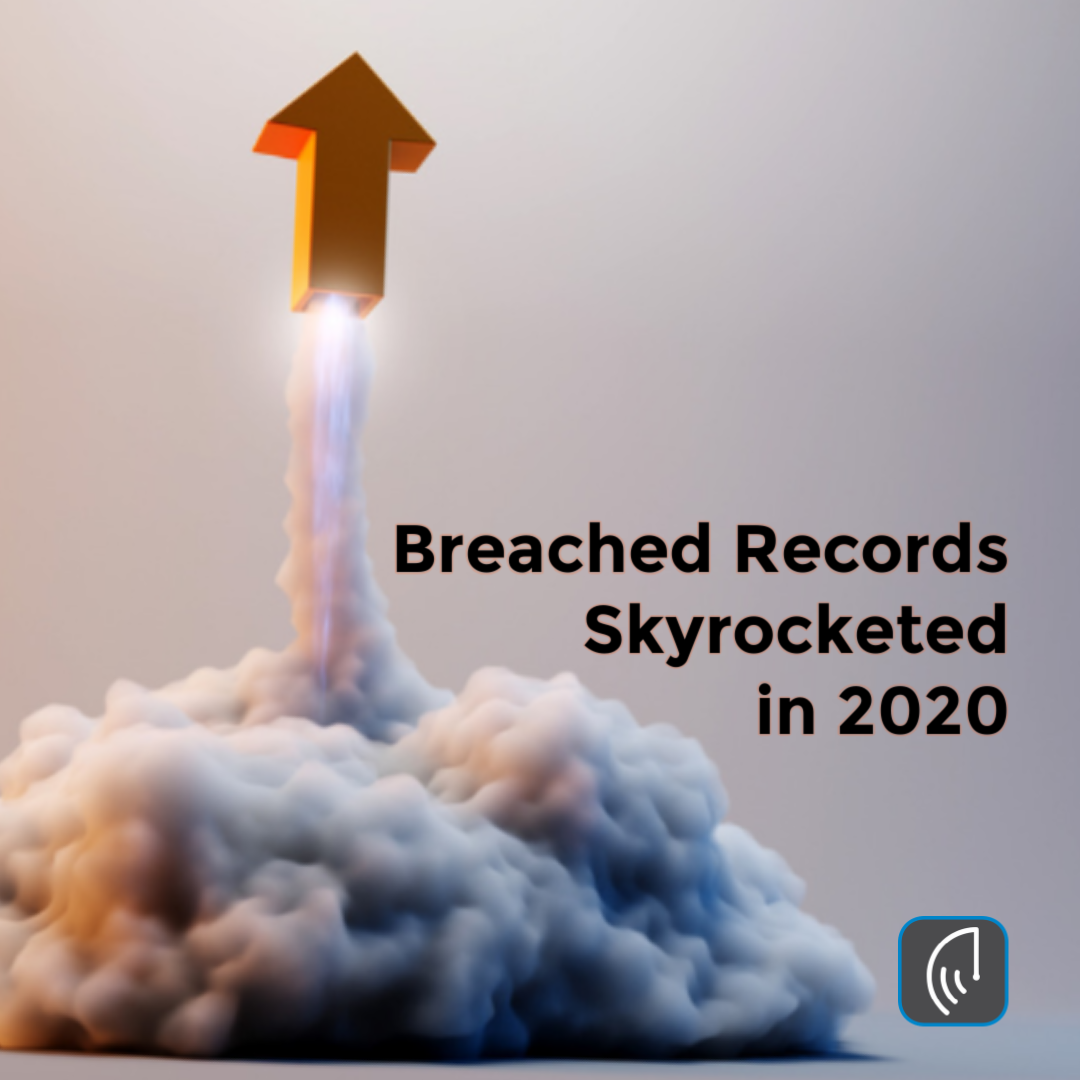According to a recently released report by Risk Based Security (2020 Sees Huge Increase in Records Exposed in Data Breaches), “the volume of publicly disclosed data breaches fell by 48% in 2020 compared with the previous year, leading to 3,932 in total.” That’s the good news. But the total number of breached records skyrocketed in 2020.
“…the volume of records that were compromised by these breaches jumped by 141% to a whopping 37 billion records. This was the largest number ever seen by Risk Based Security since 2005.” That’s the bad news.
Security experts say this can be explained by criminals getting more targeted in their efforts. Now they are focusing on ransomware and business email scams which require little data to be successful. The staggering increase in breached records can be also be attributed to the COVID-19 pandemic. Many organizations were forced to relax their security policies. Businesses for employees to work from home and students to study remotely, unwittingly exposed their networks to compromise.
“While it is encouraging to see the number of data breaches, as well as the number of people impacted by them, decline, people should understand that this problem is not going away,” says Eva Velasquez, ITRC’s president, and CEO. “Cybercriminals are simply shifting their tactics to find a new way to attack businesses and consumers. It is vitally important that we adapt our practices, and shift resources, to stay one step ahead of the threat actors.”
As the pandemic and the threat to your personal information continues in 2021, here are some tips to consider:
- Cut your cyber and identity theft risks by learning about the Internet of Faking and Extortion occurring through social media. This has become a new profit center for ID theft criminals.
- The Internet of Things adds can add tremendous benefits through devices and apps. But these “things” also create opportunities for hackers and ID theft criminals to steal and use your information. (Internet of Things is Exposing You)
- While IT and hacking are the sizzle that continues to create data-breach headlines, most data-breach events are caused by lost devices, human error, and malicious intent. Only 50 percent of breaches are caused by IT and hacking.
- As the use of Telehealth and remote health-related services technologies increase, medical ID theft will continue to increase. Be more vigilant in securing and monitoring your medical information. (Telehealth Creates Cyber Risks)
- The use of apps and social media are priority targets for cybercriminals. Be careful with the information you share and who you share it with.
- No password is “unbreakable,” but do not make it easy for ID theft criminals. Overused and weak passwords put you at much greater risk.
Lastly, The Federal Bureau of Investigation (FBI) has issued a notification warning of ongoing vishing attacks attempting to steal corporate accounts and credentials for network access and privilege escalation (FBI Warns of Vishing Attacks Stealing Corporate Accounts).
Because breached records skyrocketed in 2020, it is imperative that you are diligent in 2021 and beyond. Be mindful of how and what you share and think before you click on links.
Looking for more tips…check out this article: Data Privacy Day, January 28th!
by Mark Pribish
